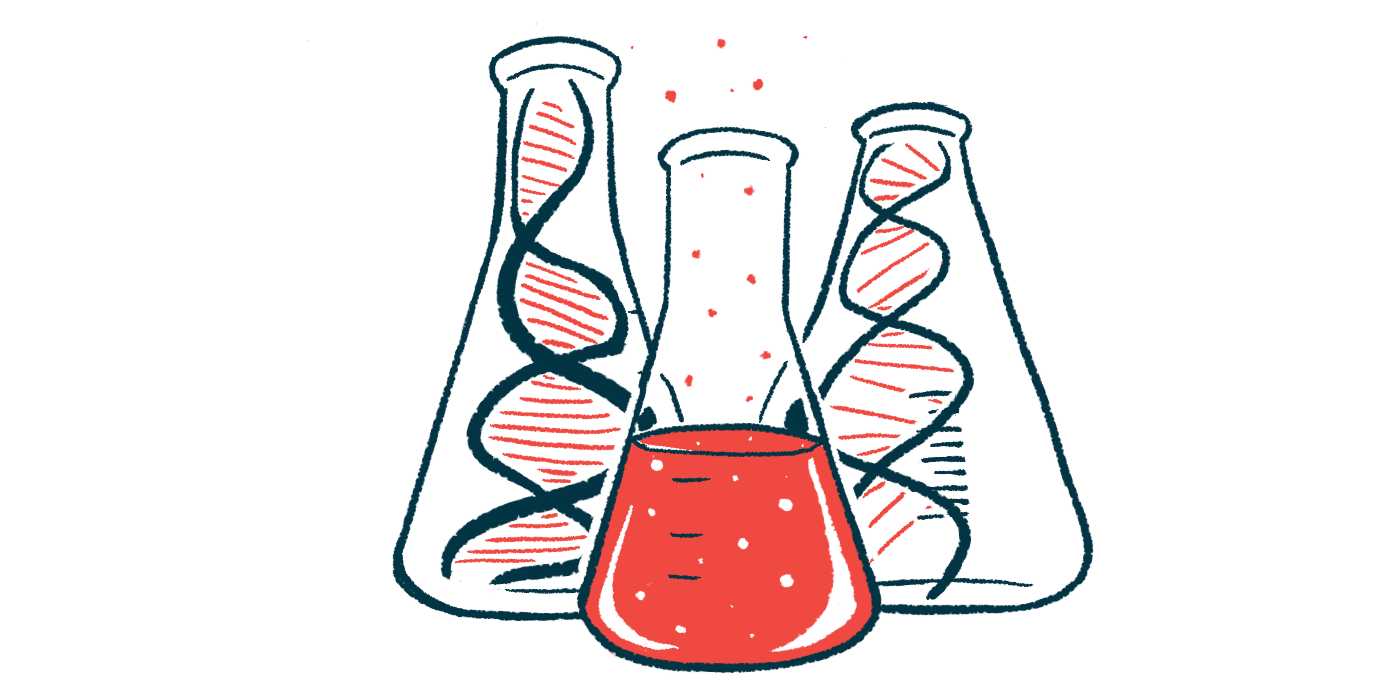Measuring enzyme activity can help accurately diagnose classical AIP
90% of patients have reduced HMBS enzyme activity, regardless of mutation

Different mutations in the HMBS gene — the cause of acute intermittent porphyria (AIP) — are not associated with distinct activity levels of the resulting enzyme but generally reduce its levels by about half, a review study has found.
About 90% of AIP patients have reduced activity levels of the enzyme, regardless of type or position of their HMBS mutations, suggesting that “determination of enzyme activity has a high diagnostic value,” researchers wrote.
The study, “HMBS gene mutations and hydroxymethylbilane synthase activity in acute intermittent porphyria: A systematic review,” was published in the journal Medicine.
AIP caused by mutations in at least one copy of HMBS gene
The most common form of acute porphyria, AIP is caused by mutations in at least one copy of the HMBS gene, which codes for hydroxymethylbilane synthase (HMBS). This enzyme is responsible for the third step in the process to make a molecule called heme that helps transport oxygen in red blood cells.
HMBS mutations reduce the enzyme’s activity and limit the amount of heme that can be made. As a result, the products of the first two steps in the heme process build up to toxic levels in the body’s tissues, causing symptoms.
Most AIP patients (95%) have reduced HMBS activity in red blood cells, a form called classical AIP. Those showing normal HMBS activity levels are said to have a nonerythroid form of AIP.
More than 500 HMBS mutations have been identified to date, but there is limited data on the characteristics of these mutations and their effects on HMBS activity in red blood cells.
To know more, a team of researchers in China systematically reviewed studies published up to July 15 that reported on HMBS mutations and enzyme’s activity levels in red blood cells of classical AIP patients.
A total 15 studies, covering 232 patients and a total of 96 HMBS mutations, were included in their final analysis. Two of the patients carried mutations in both copies of the HMBS gene.
The activity of HMBS enzyme in red blood cells as the basis for diagnosis of AIP has limitations, but it still has high diagnostic value.
Most mutations found in exons, or protein-coding regions of genes
The mutations covered many locations across the HMBS gene, but most (74%) were found in exons, the protein-coding regions of genes.
About one-third of the gene variants were missense mutations, meaning they result in the replacement of a single amino acid (the building block of proteins) at a particular position of the resulting protein. This was consistent with previous studies.
More than one-quarter (28.1%) affected splicing, or the process by which coding regions of an intermediate molecule derived from DNA are kept and non-coding regions are removed before the process of protein production.
There were also genetic deletions (19.8%) and insertions (9.4%), as well as nonsense mutations (8.3%), which result in a shorter-than-usual enzyme.
These results highlighted that AIP “has a high molecular heterogeneity, with missense mutations being the most common, followed by splicing mutations,” the researchers wrote.
Two mutations, R173W and G111R, were common and found by computer modeling to possibly interfere with the enzyme’s function. “R173W and G111R are high-frequency mutations and have been found in multiple families from different countries,” the team wrote.
Enzyme’s activity levels lower than 70% in most classical AIP patients
In most classical AIP patients (90.5%), the enzyme’s activity levels in red blood cells was lower than 70%, indicating that an assay measuring the enzyme’s activity levels may help to accurately diagnose classical AIP.
All types of mutations about halved the enzyme’s activity levels, which ranged from an average of 51.2% for missense mutations to 57.5% for splicing mutations. There were no significant differences in enzyme activity between types.
The mutation’s location also did not result in significant changes in the enzyme’s activity levels.
These findings indicate that red blood cell HMBS activity in classical AIP patients “is often decreased to half of the normal level,” and “independent of the type and location of the mutation,” the researchers wrote.
“The activity of HMBS enzyme in red blood cells as the basis for diagnosis of AIP has limitations, but it still has high diagnostic value,” the team wrote, adding that running an assay for the enzyme’s activity in combination with genetic testing may result in better outcomes for patients.








